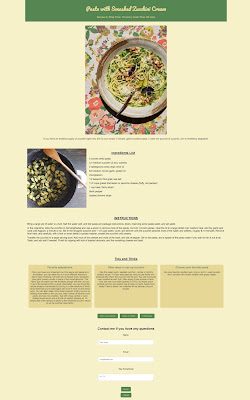Interactive Design - Exercises
Week 1 - Week 14
JIN RONG / 0361701Interactive Design / Bachelor of Design (Hons) in Creative Media
Task 1 - Exercises
LECTURES
WEEK1
Usability: Designing Products for User Satisfaction
Websites are typically divided into three key elements:
Header:The header, the top section of a webpage, typically includes the website's logo, navigation menu, and contact information, offering quick access to essential information and navigation.
Body:The main body of a webpage is the main content area, which includes multimedia elements such as text, images, and videos. Its content organization is crucial for readability.
Footer:The footer, located at the bottom of a webpage, typically includes copyright information, important page links, and contact details, offering closure and additional navigation options.
INSTRUCTIONS
Create an HTML file named "index.html."
Create a section that displays the following information:
Recipe title
Include necessary images for the page
List of ingredients
Step-by-step cooking instructions
Create an external CSS file named "style.css."
Apply CSS rules to style your recipe card.
Use CSS selectors such as element selectors (e.g., body, h1, ul), class selectors (e.g.,.recipe-title,.ingredient-list), and ID selectors (e.g.,#instructions) to style different parts of the card.


















评论
发表评论